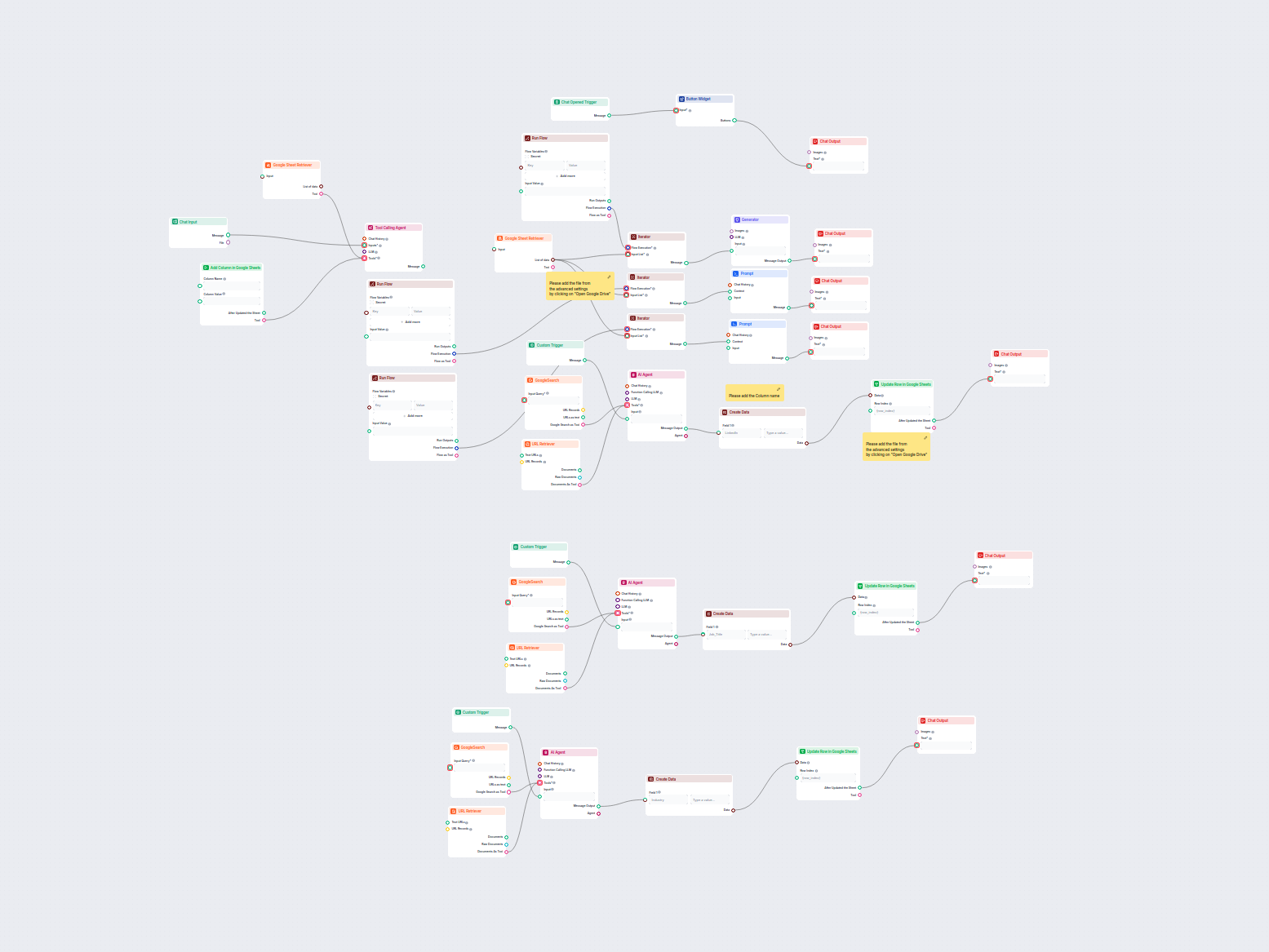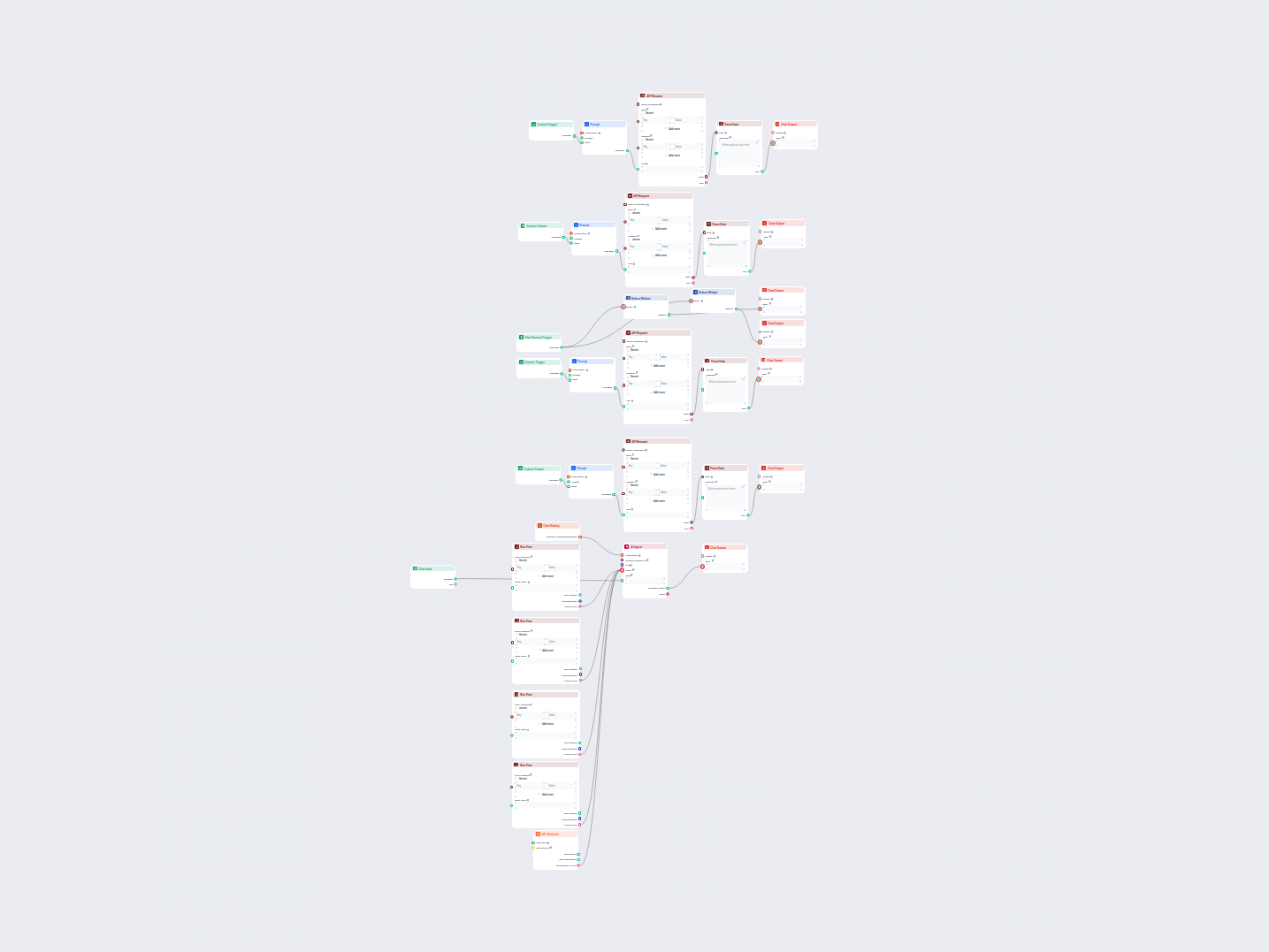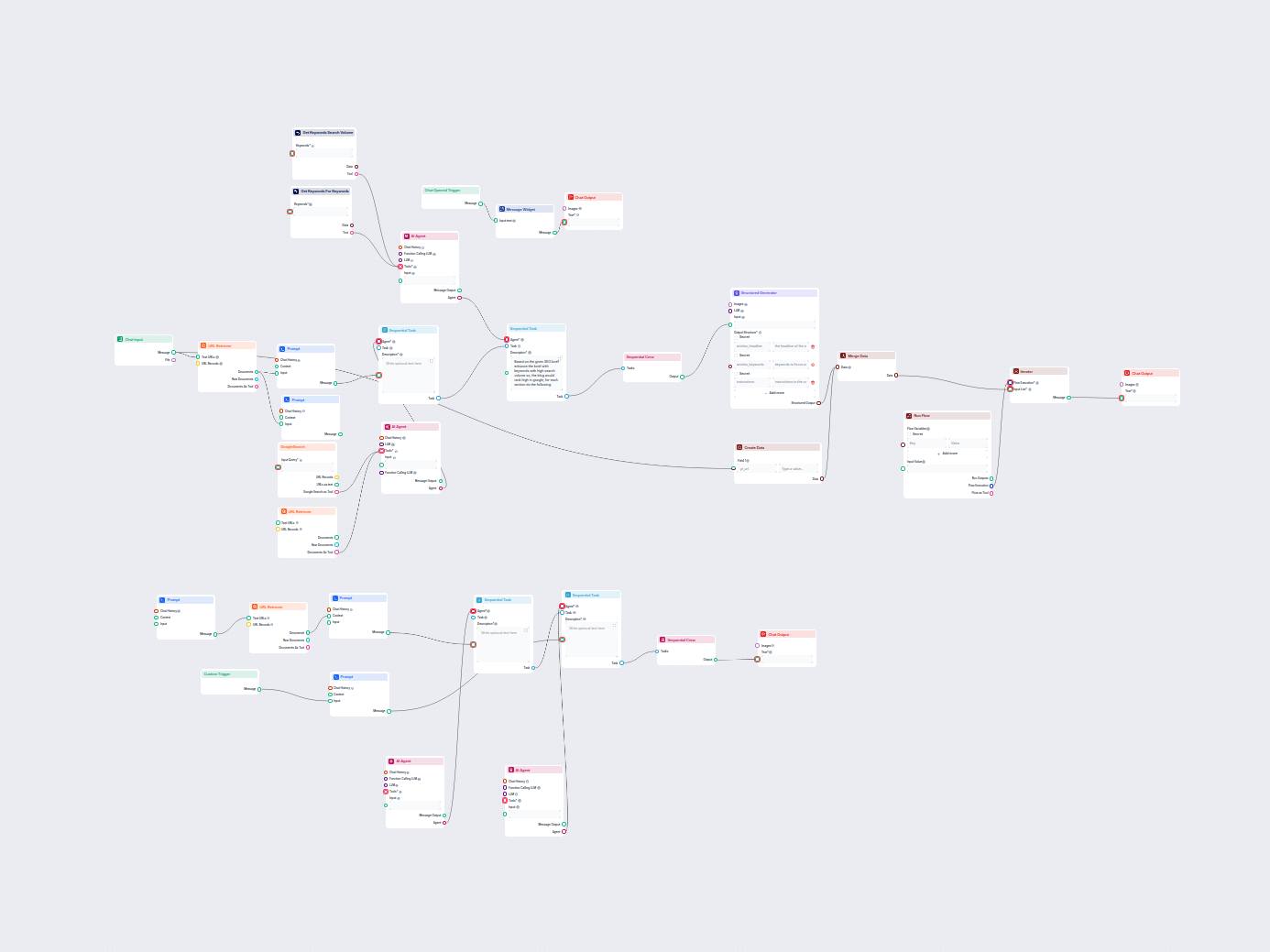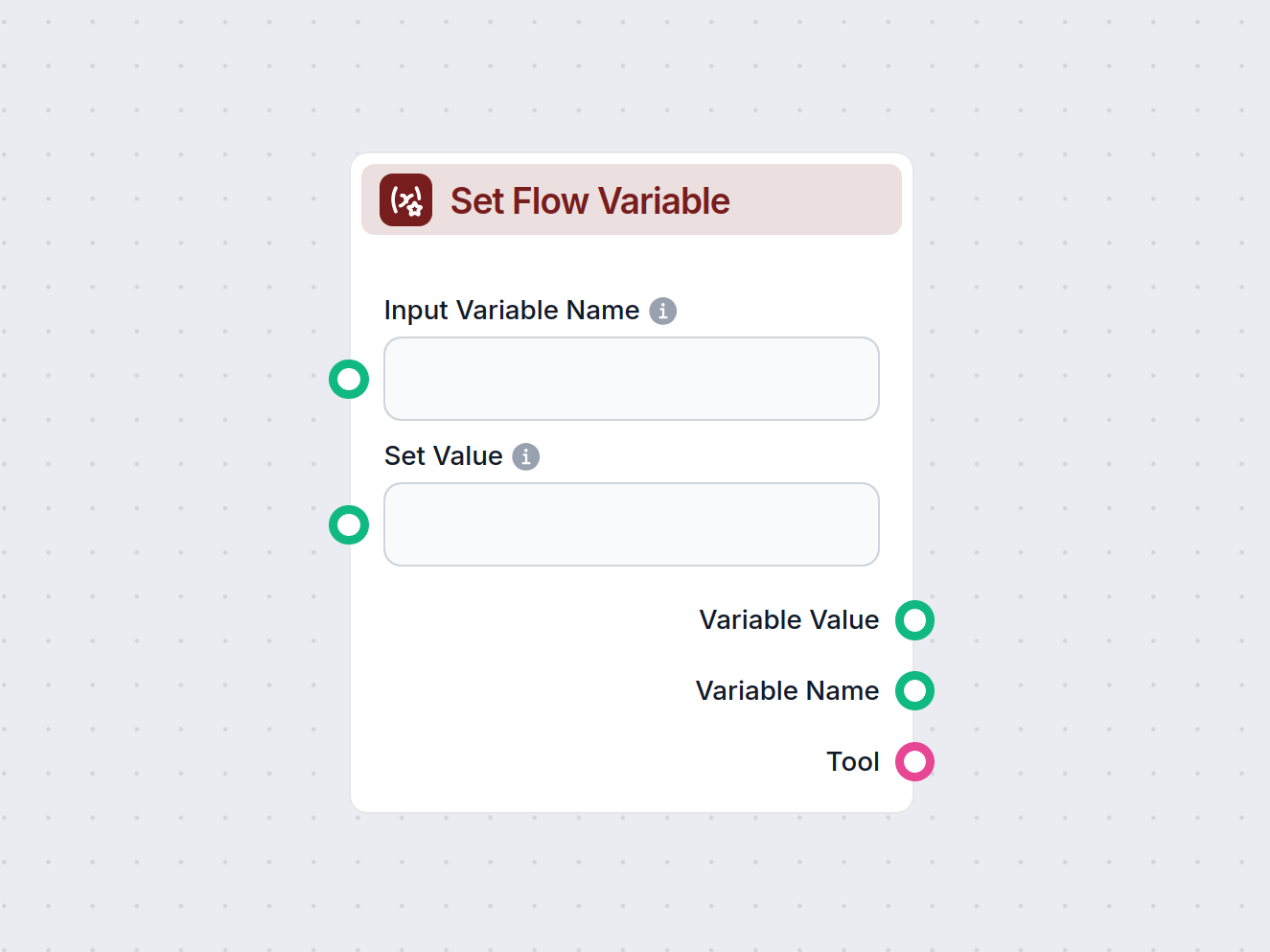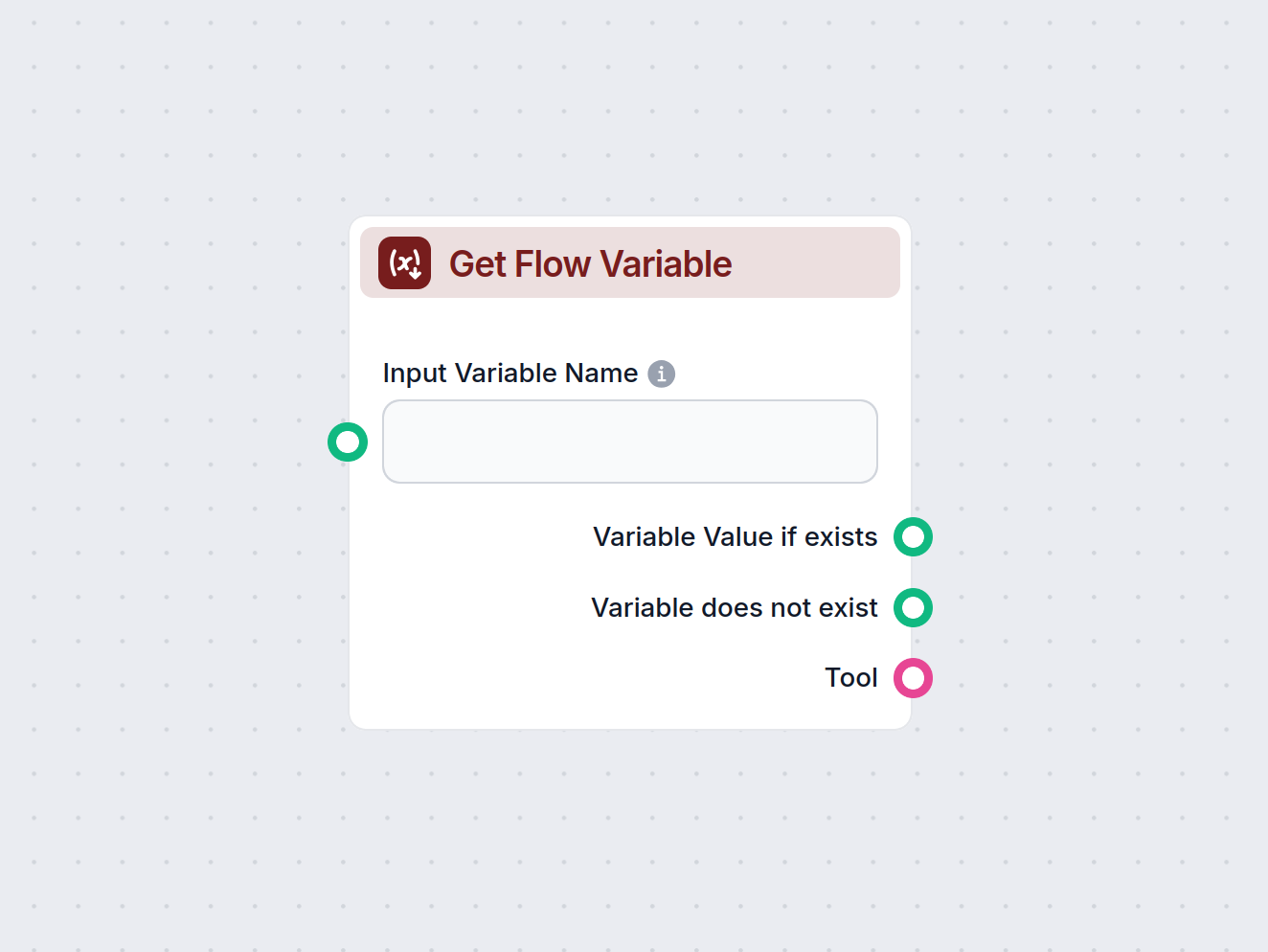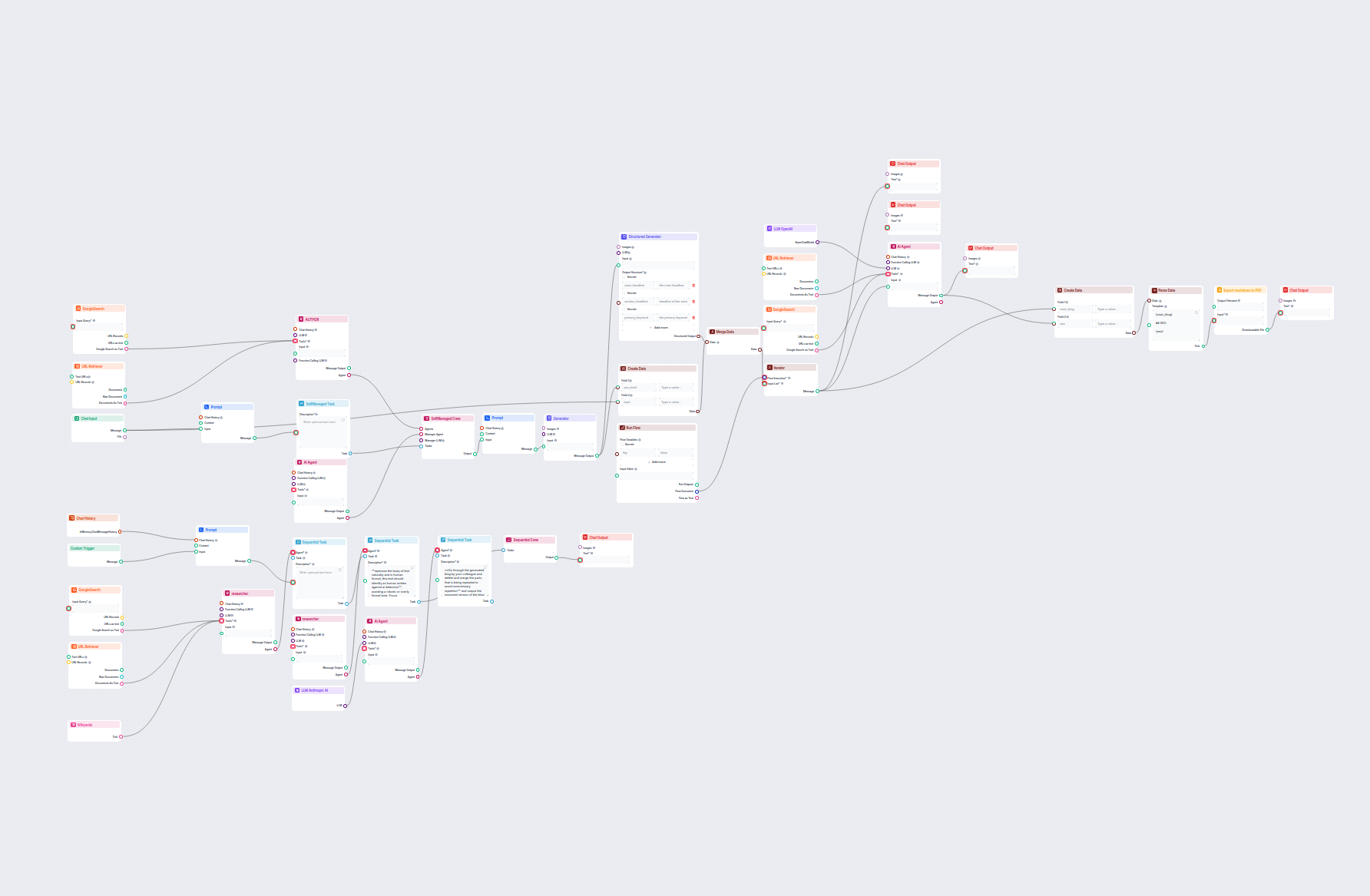
Advanced AI Blog Post Generator
Generate comprehensive, SEO-optimized blog posts with advanced structure and high word count using multiple AI agents. The workflow includes automated research,...
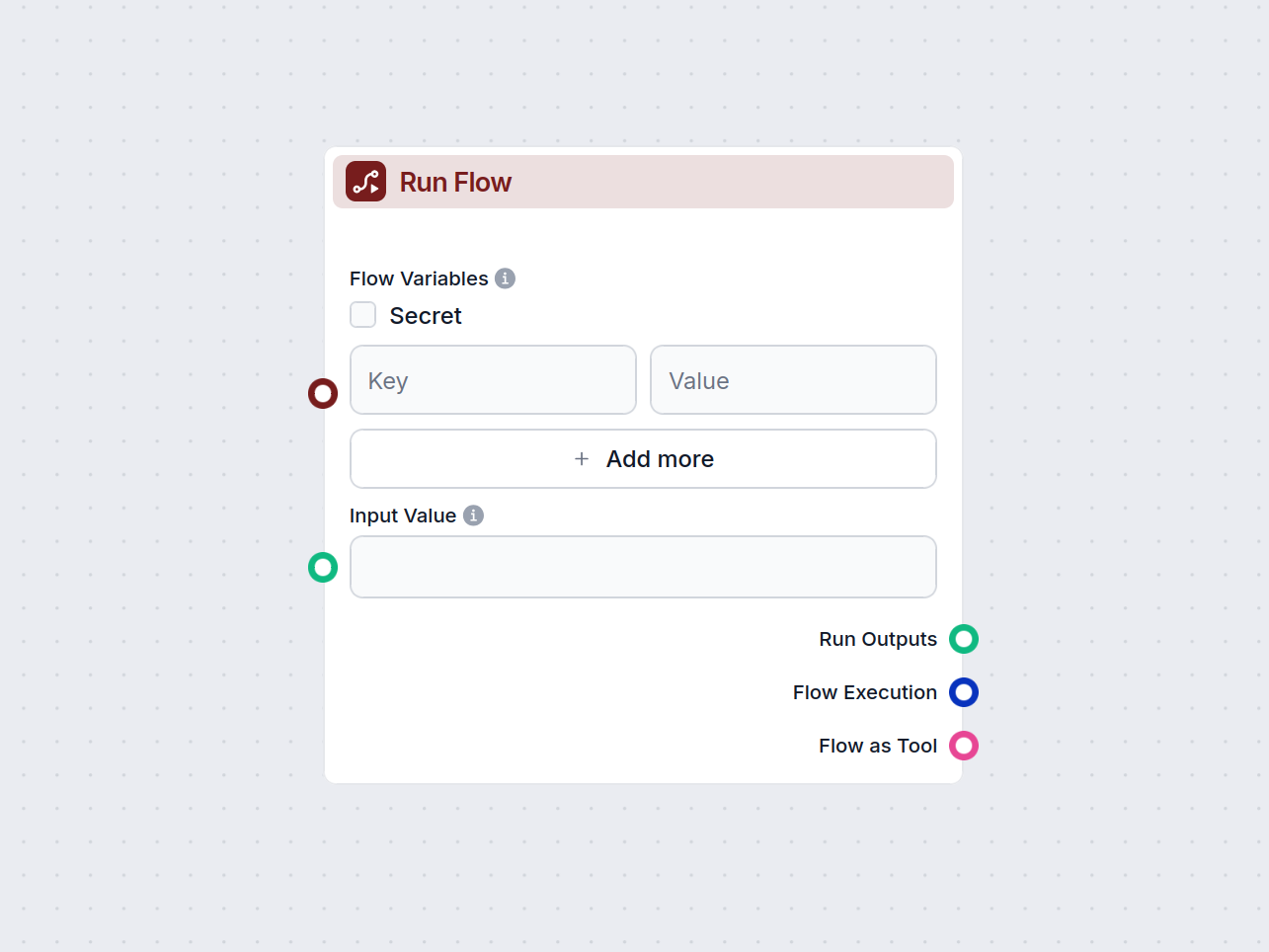
Trigger and execute other flows within your workflow, passing data and enabling modular, reusable automation with the Run Flow component.
Component description
The Run Flow component is designed to execute another flow within your AI workflow. This allows you to modularize your processes, reuse existing flows, or orchestrate complex logic by calling sub-flows as part of a larger pipeline.
This component takes your specified input and passes it, along with any additional variables, to another flow that you choose. It can run synchronously (waiting for a result) or asynchronously (fire-and-forget). This is especially useful for building scalable, maintainable AI systems where you want to break down logic into reusable building blocks.
| Input Name | Type | Description | Required | Advanced |
|---|---|---|---|---|
| Flow Name | Dynamic Select | Choose the name of the flow you want to run. | Yes | Yes |
| Input Value | String | The main input value to be processed by the target flow (e.g., a message or data payload). | No | No |
| Flow Variables | Nested Dict | Additional variables to pass into the flow; can be used to parameterize execution. | No | No |
| Async Mode | Boolean | If enabled, runs the flow asynchronously and does not return output immediately. | No | No |
| Tool Name | String | (Advanced) A reference name for the tool when using agents. | No | Yes |
| Tool Description | String | (Advanced) Description to help agents understand how to use this tool. | No | Yes |
| Trigger Type | Dynamic Select | (Advanced) Specify a trigger for running the flow. | No | Yes |
| Verbose | Boolean | (Advanced) Enable detailed logging for debugging or monitoring. | No | Yes |
The component provides multiple outputs, making it versatile for varied workflow needs:
| Output Name | Type | Description |
|---|---|---|
| Run Outputs | Message | The result returned by the flow (if run synchronously) |
| Flow Execution | FlowExecution | Detailed execution object for advanced tracking |
| Flow as Tool | Tool | Exposes the flow as a callable tool for agents |
| Feature | Benefit |
|---|---|
| Run sub-flows | Modular, maintainable workflows |
| Pass variables | Dynamic, parameterized flow execution |
| Multiple outputs | Integrate results, track execution, or provide agent tools |
| Async mode | Non-blocking, scalable processing |
| Agent/tool support | Integrate with LLM-powered or agentic workflows |
This component is essential for anyone looking to build scalable, maintainable, and modular AI workflows. It enables effective composition of flows and seamless tool-based integrations within AI-driven systems.
To help you get started quickly, we have prepared several example flow templates that demonstrate how to use the Run Flow component effectively. These templates showcase different use cases and best practices, making it easier for you to understand and implement the component in your own projects.
Generate comprehensive, SEO-optimized blog posts with advanced structure and high word count using multiple AI agents. The workflow includes automated research,...
This workflow automatically enriches Google Sheets contact data by finding LinkedIn profiles, extracting job titles and industries, and updating the sheet using...
An automated AI-powered workflow to fetch, summarize, and present the top Hacker News stories, including story details, URLs, and top comments. Users can intera...
Automatically generate high-ranking SEO blog posts from YouTube videos. This workflow extracts video transcripts, analyzes top SEO keywords, creates a detailed ...
Run Flow lets you trigger the execution of another flow from within your current workflow. This enables you to reuse existing flows, pass data between them, and build more modular automation.
Yes, you can pass both input values and variables to the target flow, making it easy to integrate and customize behaviors between different flows.
Common use cases include chaining together multiple workflows, reusing flows as tools in larger automation, and creating complex sequences that rely on the output of other flows.
Yes, you can enable async mode so the flow runs in the background, and no output is immediately returned. This is useful for long-running or parallel tasks.
Absolutely. The Run Flow component allows you to define flows as tools, which can then be referenced and executed by agents within your automations.
Enhance your automation by connecting and executing flows inside other flows using the Run Flow component in FlowHunt.
Effortlessly manage your workflow by setting or updating variables on-the-fly with the Set Flow Variable component. This tool allows you to assign values to nam...
Components are the building blocks of your AI chatbots, workflows, and automations. They can be used to create reusable UI elements, manage state, and handle us...
The Get Flow Variable component enables you to access variables and parameters within your workflow, making it easy to retrieve data stored earlier in the flow....
Cookie Consent
We use cookies to enhance your browsing experience and analyze our traffic. See our privacy policy.
